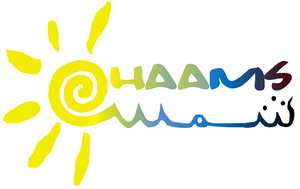WP6 « online Decision Support Tools » (A. Fadel and M. Le Page)
This work package aims to propose different operational decision support tools for stakeholders, with three objectives: 1) optimisation of water management, particularly for irrigation at local or regional scales 2) analysis of evolution of water resources in future and adaptations, 3) quantification of water resources particularly in extreme conditions. This work package is certainly the most important in order to tackle the strategic and tactical aspect of integrated water management and agricultural water management (“water dashboard”). In fact, we will be very vigilant to be sure that proposed tools are clearly adapted to realistic use by stakeholders and not just tools for research laboratories. We will start from existing applications developed in the last years that will be revamped and adapted for the specificities of the south-Mediterranean users. These tools are based on the combination of an intensive use of remote sensing data, local data (WP2) and user inputs (WP3) and will benefits from modelling development of WP4. Three tools will be particularly essential in our collaborations with stakeholders:
– SAT-IRR (Satellite for Irrigation Scheduling) is an online tool based on high resolution satellite imagery (Sentinel-2, Landsat-8), in-situ weather data and short-term weather forecasts to compute a daily water budget of irrigated crops, thus allowing to provide irrigation water turn recommendations to the farmer. The challenge will be to find the best way to transmit the tool to different type of farmers. This work is built upon previous works on individual irrigation (Le Page et al., 2014), collective irrigation (Belaqziz et al., 2013, 2014) and water use efficiency (Kharrou et al., 2011).
– MEDI (Mediterranean Drought Index) is an online tool to analyze indicators of drought. The actual tool uses soil moisture (ASCAT), vegetation index (MODIS) and rainfall (CHIRPS) to provide the user with a synoptic view in time and space of the actual conditions. MEDI is addressed to national or watershed managers and can help in the assessment of food production or water management at the seasonal scale. MEDI will be extended by integrating new drought indicators developed within the project. This work is built upon previous work about drought indices (Jarlan et al., 2015; Zribi et al., 2010).
– SAMIR-WEAP-Modflow of the Haouz in Morocco and the Merguellil in Tunisia are watershed integrated models that have been built to explore future climatic and anthropogenic scenarios of water management, in particular regarding the future of aquifers. We will transmit the model and tools to the local water agencies and improve some key processes parameterization based on WP4 knowledge. This work is built upon previous work about integrated modeling (Le Page et al., 2012, Le Page et al., 2016).
Proposed tasks
6.1 Improvement of the decision-making tools
This task involves three aspects: (1) the integration of key processes parameterization advance (groundwater recharge rate, snow dynamic …) and agricultural practices (WP4) in the integrated modelling platform; (2) strengthen the MEDI platform with new multi-sensor drought indicators, snow cover estimate (WP2) and model outputs (WP5); (3) improve the reliability of the SAT-IRR water budget based on the methodological development of WP4 through data assimilation of remote sensing products (SM, ETR) and in situ data based multi plot low cost network of SM sensors.
6.2 Decision-making tools: technical development
This includes : (1) translations, redesign, branding (new specific web interface and sms dissemination) This will be done in close interaction with end-users at the corresponding levels; (2) the development of on Application Programming Interface (API) will allow the remote computer to push or retrieve data; (3) the integration of local data; Rainfall gauge network, weather station network, dam storage network data will be gathered for a better understanding of the natural and anthropogenic system.
6.3 Tools evaluation with end-users
The tools will be tested with their respective end-user, like water managers or farmers. The SAT-IRR tool for Irrigation scheduling will be tested both at the plot scale with a sample of farmers selected from the farm typology carried out at WP3 and at the irrigated perimeter scales (in Morocco, ORMVAH gave us his approval in principle) in order to demonstrate that, even for existing irrigation infrastructures, water saving can be significant when irrigation water turns planning is based on the plant water demand rather than simply on the available water.
Deliverables:
- D6.1: Report on the integrated modelling platform M30
- D6.2: Report on implementation of the new interfaces M27
- D6.3: Report about the integration of local data in the web applications M30
- D6.4: End-user report about the use of the tools M36
